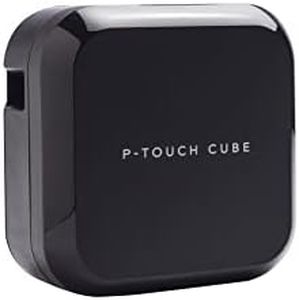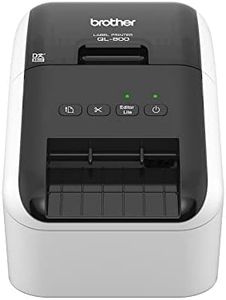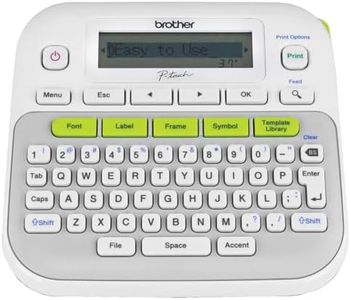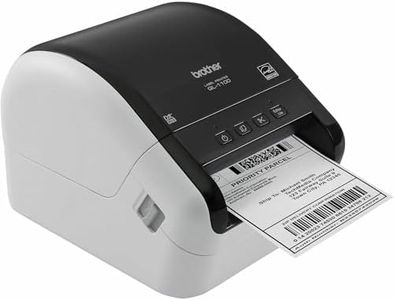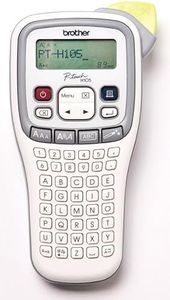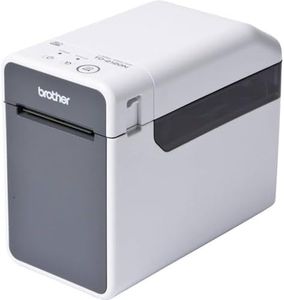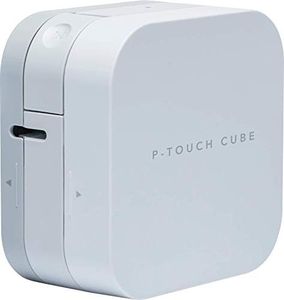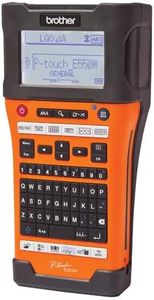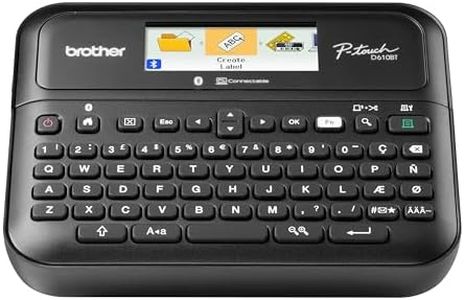We Use CookiesWe use cookies to enhance the security, performance,
functionality and for analytical and promotional activities. By continuing to browse this site you
are agreeing to our privacy policy
10 Best Brother Label Printers
From leading brands and best sellers available on the web.Buying Guide for the Best Brother Label Printers
Choosing the right label printer can make organizing, shipping, or office work much easier and more efficient. Brother label printers are popular for their reliability and range, but picking the best fit comes down to knowing your primary tasks. Think about what you’ll be labeling, how often, and in what environment (home, office, warehouse). This will guide you to the right set of features and specifications, and ensure you don’t end up with a printer that’s too complex or too limited for your needs.Print MethodLabel printers typically use either direct thermal or thermal transfer printing methods. Direct thermal printers don’t use ink or toner but require special heat-sensitive labels, which can fade over time, especially in sunlight or heat. Thermal transfer uses a ribbon to produce longer-lasting labels. If you need labels for short-term tasks like shipping, direct thermal is usually fine. For labeling things that need to last, such as archival files or outdoor items, thermal transfer is a better choice.
Label Size CompatibilityDifferent printers support various label widths and lengths. Some are made for narrow labels like those used for files and folders, while others can handle wide shipping labels. Consider what you’ll typically be printing—if you only need small address or folder labels, a narrower printer is plenty, but for shipping boxes or product labeling, you’ll need a printer that supports larger, wider label rolls.
Connectivity OptionsBrother label printers come with different types of connections, such as USB, Wi-Fi, Bluetooth, or even Ethernet. USB is the most straightforward for use with a single computer, while wireless options like Wi-Fi or Bluetooth allow printing from multiple devices, including smartphones and tablets. If you plan to print from mobile devices or share the printer in an office, consider models with wireless capabilities. For stationary, personal use, basic USB is often enough.
Print SpeedPrint speed is usually measured in millimeters or inches per second, indicating how fast the printer can output labels. Faster speed is useful if you print in bulk or need quick turnaround, such as in a busy warehouse. For light, occasional use at home or in a small office, a moderate speed will be sufficient and keep the printer cost and complexity lower.
ResolutionResolution, measured in dots per inch (DPI), affects how crisp and clear your labels look. Higher resolution means more detailed text and images. For basic text labels, standard resolution is usually enough, but if you want to include logos, graphics, or barcodes, especially small ones, a higher-resolution printer will produce better results.
Supported Label TypesSome Brother label printers only use proprietary label tapes (like their TZe or DK labels), while others may support more generic label rolls. If you want lots of choices in colors or finishes, or need specialty labels such as waterproof or extra-sticky, check the printer’s compatible label types before you buy. Your choice should be guided by how specialized your labeling needs are.
Software CompatibilityCheck that the printer’s included software works with your computer’s operating system and meets your ease-of-use needs. Some software lets you design complex labels or print barcodes, while others are simpler. If you plan to do more than basic labeling, look for advanced software features. If you prefer using mobile apps or cloud printing, ensure the printer is compatible with the platforms you use most.


